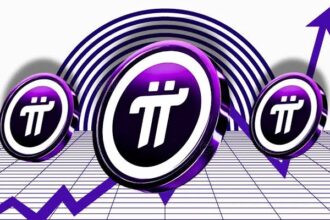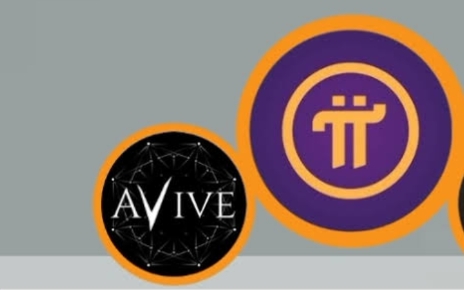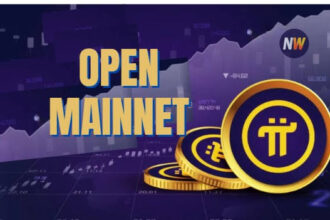In the fast-moving world of cryptocurrency, new coins constantly emerge, each with unique features and benefits aimed at solving real-world problems or capitalizing on new trends. Recently, Avive, a newcomer in the crypto space, has attracted considerable attention as a potential competitor to the more established Pi Network. Avive aims to carve its place within the decentralized ecosystem by leveraging a unique set of features and principles focused on privacy, security, and user accessibility. As these two cryptocurrencies vie for market share, comparing their approaches, benefits, and development potential is essential to understanding their respective strengths and potential impacts on the industry.
Introduction to Avive and Pi Network
Avive and Pi Network both share core principles of decentralization and user empowerment. These principles are fundamental to the blockchain and cryptocurrency ecosystem, as they prioritize creating open, accessible networks where individuals control their digital assets. However, Avive and Pi differ significantly in their approaches to achieving these goals.
Pi Network gained significant traction by introducing an innovative concept known as “mobile mining.” This allows users to mine Pi coins directly from their smartphones without requiring the energy-intensive processes traditionally associated with mining. Pi’s mobile mining model has contributed to its rapid user base growth, largely because it eliminates barriers to entry that often hinder mainstream cryptocurrency adoption. On the other hand, Avive employs a Proof-of-Stake (PoS) consensus mechanism. Rather than mining, Avive’s PoS approach allows users to earn rewards and contribute to the network’s security by staking their existing tokens. This method enhances scalability and encourages long-term commitment, as users must hold their tokens to participate in the network’s governance.
A Closer Look at Mining and Consensus Mechanisms
The mining or token-generation methods used by Pi and Avive are crucial, as they directly impact security, accessibility, and scalability.
Pi Network: Mobile Mining for Inclusivity
Pi Network’s mobile mining approach is designed to allow anyone with a smartphone to participate in the network and earn Pi tokens. This mobile mining model is central to Pi’s mission of inclusivity, giving users who may lack access to expensive hardware the opportunity to participate in the cryptocurrency ecosystem. Mobile mining also appeals to a broader audience, creating a network effect that could contribute to the currency’s value and adoption rate. However, there are trade-offs with mobile mining; while it enhances accessibility, it could face scalability and security issues as the network grows.
Avive: Proof-of-Stake for Security and Sustainability
In contrast, Avive’s Proof-of-Stake model prioritizes security and scalability. Under PoS, users contribute to the network by staking their Avive tokens in a wallet, which helps secure the network and allows users to earn rewards over time. This method reduces the environmental impact often associated with Proof-of-Work (PoW) mining and encourages a dedicated, long-term community of token holders who are invested in the network’s growth. PoS also allows for more efficient transactions, reducing the need for heavy computational power. With its focus on security and sustainability, Avive’s PoS approach is likely to appeal to users and investors interested in eco-friendly, scalable networks.
Technological Framework and Roadmaps
Beyond their mining mechanisms, Pi and Avive also differ in their technological underpinnings and development roadmaps.
Pi Network: A User-Driven Network with Community Appeal
The Pi Network initially gained significant attention through its accessible design, which made it possible for anyone to participate using a smartphone. However, Pi has faced scrutiny regarding the technical complexity and pace of its development. Although Pi has a considerable user base, questions remain about the network’s blockchain structure and how quickly the team can move toward launching a fully operational mainnet. As the Pi Network continues to grow, ensuring a secure, scalable infrastructure will be critical to maintaining user trust and adoption.
Pi Network’s development roadmap includes plans for building a decentralized application (dApp) ecosystem, which would allow users to use Pi tokens for various real-world applications. If executed successfully, these dApps could help Pi establish itself as a functional, user-driven network with an engaged community. However, as Pi’s development has sometimes moved slower than anticipated, some users have become uncertain about the network’s long-term viability.
Avive: Robust Infrastructure and Smart Contracts
Avive, on the other hand, has prioritized building a secure, scalable infrastructure from the outset. Avive’s blockchain is designed to support smart contract capabilities, a feature that allows developers to create applications that operate autonomously and without intermediaries. By integrating smart contracts, Avive can create a range of use cases across industries, including finance, supply chain, and gaming. These smart contract capabilities position Avive as a potential competitor to more established platforms like Ethereum.
In addition to its blockchain infrastructure, Avive has ambitious plans to integrate with existing financial systems. This integration could allow Avive to bridge the gap between traditional finance and decentralized finance (DeFi), making it easier for users to transition between the two. If successful, Avive could appeal to both individual users and institutional investors looking for a reliable, scalable platform.
Accessibility and User Adoption
One of the most important factors for any cryptocurrency’s success is its level of accessibility and how quickly it gains traction among users. In this regard, Pi Network’s mobile mining strategy has given it an advantage by making it easy for almost anyone to participate. However, Avive’s emphasis on PoS and its scalable infrastructure also makes it accessible, especially to users who value security and sustainability.
Pi Network’s Community-Driven Model
Pi Network’s accessible design has led to a large, engaged user base willing to mine Pi through mobile phones daily. This strong community presence has helped Pi Network gain visibility and attract users interested in earning cryptocurrency without investing in expensive mining equipment. Moreover, Pi has adopted a community-driven model, where users feel a sense of ownership and connection to the network. This sense of community has contributed to Pi’s reputation as a project focused on empowering individuals.
Avive’s Focus on Security and Ease of Use
While Avive’s PoS model may lack the immediate accessibility of Pi’s mobile mining, it compensates by appealing to users who prioritize network security and sustainability. Avive’s focus on creating a scalable infrastructure and integrating with traditional finance may also attract users looking for a platform that balances decentralization with security and regulatory compliance. Although Avive’s PoS model may initially require more commitment from users than Pi’s mobile mining, its long-term sustainability could make it an attractive option for users interested in a secure, growth-oriented platform.
Potential for Mainstream Adoption
For any cryptocurrency, mainstream adoption is the ultimate goal, and both Avive and Pi Network have unique strategies for achieving it.
Pi Network’s Vision for a Decentralized Ecosystem
Pi Network has long-term plans to build a decentralized ecosystem, including an app store and various applications that would allow users to spend Pi tokens in different ways. By encouraging developers to create dApps on the Pi platform, Pi aims to establish itself as a network with genuine utility, not just a currency for speculative trading. If Pi successfully implements this vision, it could create a self-sustaining ecosystem that appeals to both casual users and dedicated crypto enthusiasts. This approach could help Pi transition from a novelty to a widely-used digital currency with real-world applications.
Avive’s Integration with Traditional Financial Systems
Avive’s development roadmap includes plans for integrating with existing financial systems, which could make it easier for users to transition from traditional finance to decentralized finance. This focus on compatibility with established financial networks suggests that Avive may be better positioned to attract institutional investors and users who value stability and regulatory compliance. By building relationships with banks, payment processors, and other financial institutions, Avive could offer a seamless experience for users who want the benefits of cryptocurrency without the challenges of navigating an entirely decentralized ecosystem.
Challenges and Future Prospects
Both Pi Network and Avive face challenges as they work to establish themselves in the highly competitive cryptocurrency market.
Challenges for Pi Network
One of Pi Network’s main challenges lies in its technical development and scalability. While Pi has succeeded in attracting a large user base, questions remain about whether it can handle the increased demand and ensure security. Additionally, as Pi moves closer to launching its mainnet, it will need to address regulatory concerns and establish itself as a secure, compliant platform. Without these assurances, Pi may struggle to gain credibility among more cautious investors.
Challenges for Avive
Avive’s primary challenge will be differentiating itself in a market filled with PoS-based cryptocurrencies. While Avive’s focus on scalability and integration with traditional finance is promising, it may need to demonstrate clear advantages over similar projects to attract a dedicated user base. Furthermore, Avive’s commitment to regulatory compliance could lead to obstacles in certain jurisdictions where cryptocurrency regulations are still evolving.
Conclusion: A Potential Rivalry for the Future of Decentralized Currency
As new digital currencies like Avive emerge, the cryptocurrency landscape will continue to grow and diversify. Avive and Pi Network each bring unique features to the table, with Pi’s mobile mining model emphasizing accessibility and Avive’s PoS model prioritizing security and scalability. Both cryptocurrencies are likely to appeal to different types of users based on their approaches to accessibility, network security, and user experience.
Pi Network has the advantage of a large, engaged community and a unique mobile mining concept that has broadened cryptocurrency’s appeal. Meanwhile, Avive’s emphasis on PoS, security, and integration with traditional finance could position it as a more scalable and sustainable option for users and institutions.
The competition between Avive and Pi Network reflects the broader evolution of cryptocurrency, where innovation, accessibility, and security are increasingly becoming prerequisites for success. As these projects develop, their respective communities and technological advancements will shape the future of decentralized finance. With both cryptocurrencies poised for growth, only time will tell which will emerge as a preferred choice in the rapidly evolving crypto landscape. Continue Reading
















